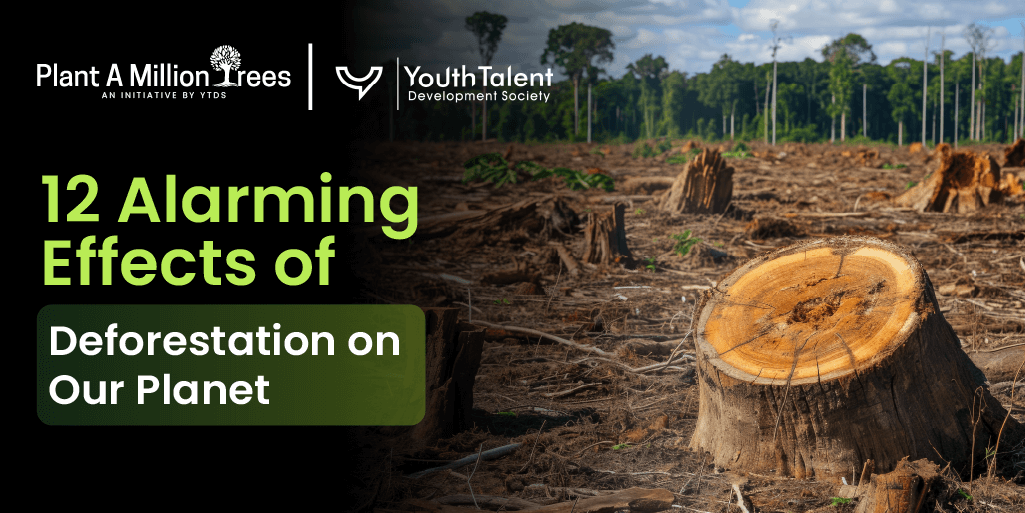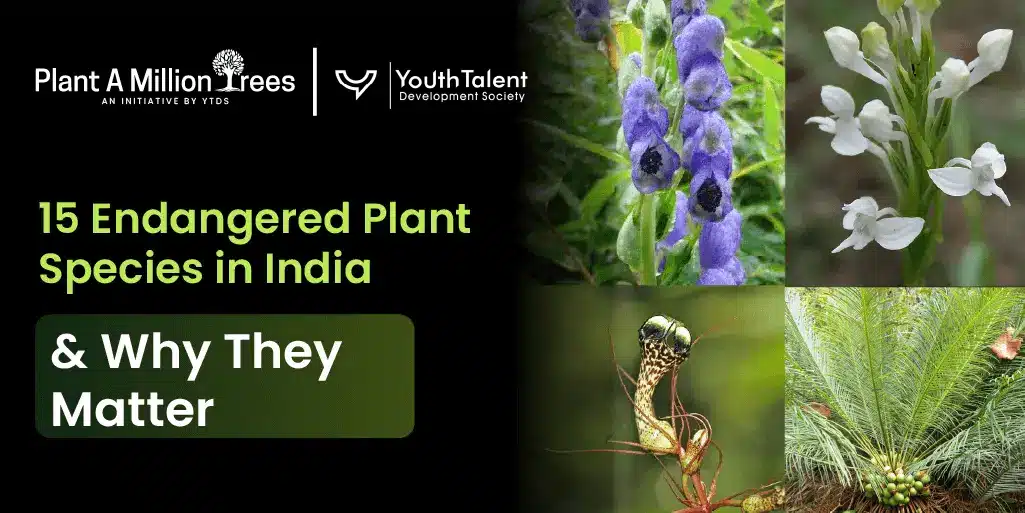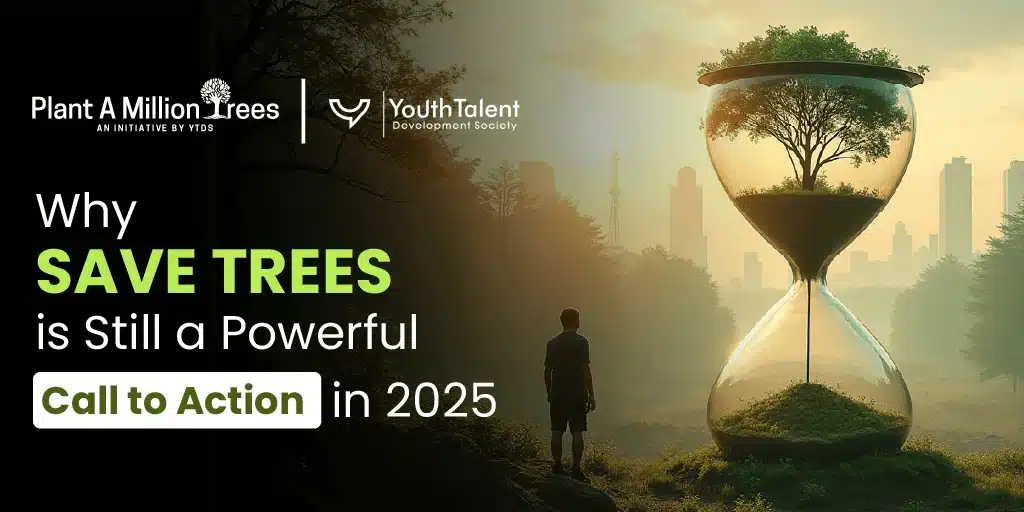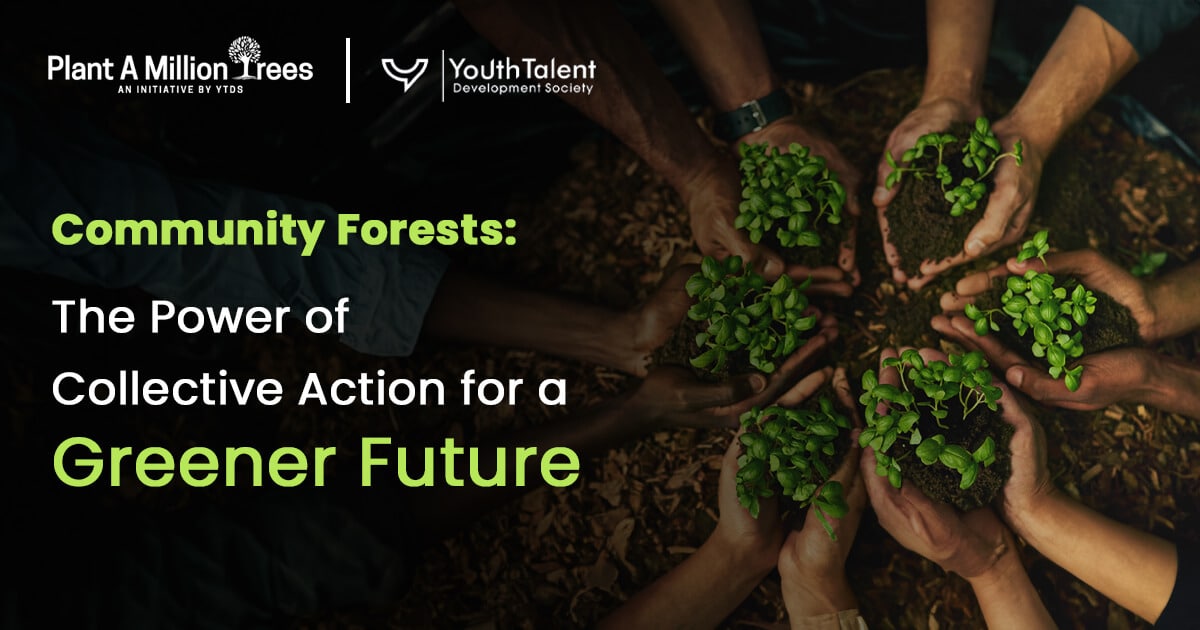The country is considered one of the most botanically diverse countries in the world with more than 18,000 species...
Cutting trees on a massive scale has made deforestation a top environmental priority, both at the local and global levels. Agroforestry, logging, mining, and road construction activities all offer some good evidence for this phenomenon.
What stands as a classic example of an academic question- What are the effects of deforestation? – No longer deforestation? – no longer remains so; rather, it is an urgent concern for our planet.
The Forest Survey of India tells us that the country lost over 14% of its forest area between 2001 and 2018. From the Amazon in Brazil to the Western Ghats in southern India, the green lungs of this earth are gasping for breath.
Deforestation is not far from felling a tree; it is killing the remaining lifelines for biodiversity, climate stability, and human survival.
The blog brings forth twelve frightening consequences of deforestation and highlights the impact of deforestation on the Indian environment through some up-from-the-ground incidents.
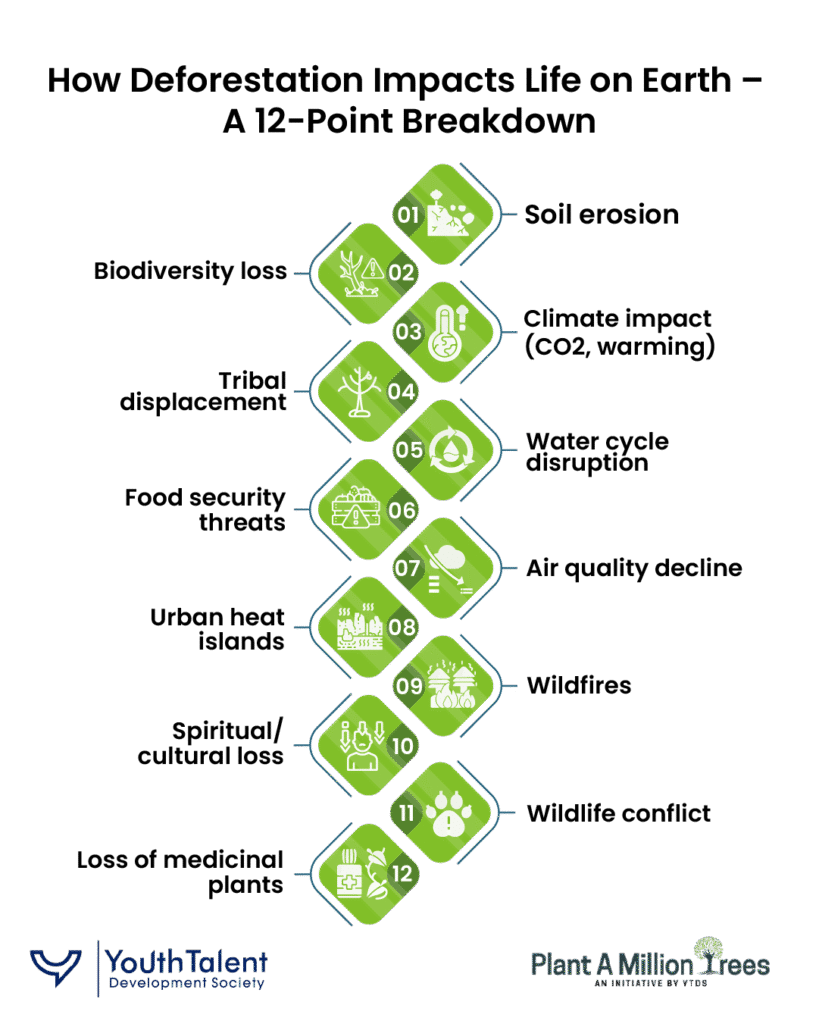
Nature’s SOS: The Devastating Impact of Deforestation
Among the first and most serious effects of deforestation is the disruption of the natural equilibrium of the earth. Trees aid to halt soil erosion by stabilizing the topsoil with their roots.
The earth is loose and open to being washed away by rain when forests are destroyed. Direct connection between huge landslides and deforestation for roads and tourism can be found in Himachal Pradesh and Uttarakhand.
Another significant consequence is loss of biodiversity. Millions of kinds of plants and animals—many of which are indigenous— depend on forests. Clearing forests damages these natural habitats and causes species to disappear.
Additionally upsetting microclimates, the loss of forest cover alters rainfall patterns, humidity levels, and even local wind systems. These disturbances show the long-term consequences of tree cutting by affecting agriculture, water availability, and metropolitan air quality.
Earth’s Lungs Are Burning: Climate Can’t Breathe
Forests take in large amounts of carbon. Trees take in CO2 from the atmosphere when they go through photosynthesis and retain it in their bodies.
If people remove trees by felling or burning them, it means more carbon dioxide is emitted which can cause global warming.
Nearly one in ten carbon emissions originates from deforestation, the Intergovernmental Panel on Climate Change (IPCC) has found. The loss of Assam’s rainforests and Chhattisgarh’s dry deciduous forests in India has let thousands of tons of carbon pollute the air.
Reduced capacity to store carbon in trees leads to warmer weather and fails to support agreed climate targets. The water cycle is helped in part by forests which can also cause clouds to form and rain to fall.
Lack of them can lead to droughts that last for a longer time or make the seasons’ monsoons less predictable.
Vanishing Voices: The Silent Extinction of Earth’s Species
The effects of deforestation on the diversity of life in India are very damaging. About 80% of all land species live in forests. Loss of forests means there will be no animals left in them.
Elephants, Bengal tigers, Indian rhinoceroses and lots of bird species need forests for their safety and to find food.
About 30% of the forest in the Western Ghats, one of the world’s top biodiversity regions, has vanished because of new plantations and increased development.
Because of what happened, the Indian Pipewort plant and the Lion-tailed macaque are in danger of extinction. In addition, the division of woods separates animals which makes it difficult for them to breed and find food.
Animals wander into human settlements when their food supply is threatened which increases conflicts.
From Communities to Corporates: Tracing the Economic Footprint
Besides harming the environment, deforestation harms indigenous communities the most. The Gond, Baiga and Jarawa tribes who live in forests use them for their food, medicine and their way of living. These communities see forests as valuable resources as well as sacred cultural places.
When deforestation takes place, these people must move elsewhere which leads to the loss of their special knowledge. There are increased rates of jobless people, worsened health and decline in community ties due to social-economic problems.
Because of coal mining in Jharkhand, thousands have been displaced and can no longer use the forests or their sacred spots. The severe and lasting effects of deforestation on such communities are usually ignored by official policy discussions.
Breaking the Flow: Deforestation’s Impact on the Water Cycle
Forests help keep the hydrological cycle in order. Through transpiration, trees both take in water and release it which plays a role in cloud formation. Removing trees interrupts the cycle which leads to less rainfall.
Due to cutting down forests in the Western Ghats in Kerala, the monsoon rains have changed and once flowing rivers no longer have water.
Furthermore, if trees are missing, surface runoff rises, less recharge happens to groundwater and rivers often dry up much sooner in the summertime. A lack of water makes drinking and irrigation supplies unreliable which increases the difficulties farmers face.
Food vs. Forests: A Battle We Can’t Afford to Lose
Deforestation lowers food security by decreasing agricultural performance and causing disturbance in ecosystems that benefit farming. If the forest floor is uncovered, the soil quickly breaks down by losing both organic matter and microbes.
The use of shifting cultivation and slash-and-burn farming in Jharkhand and Madhya Pradesh has caused important farmland to become impossible to use.
Furthermore, floral diversity losses due to deforestation cause a decrease in bees and butterflies which depend on pollination. The results are lower yields, primarily for fruit and vegetable farmers.
Loss of forests causes rainfall and temperature to change which leads to more problems in food production and makes it harder for small farmers to profit.
Choking on Change: How Deforestation Destroys Our Air
Trees remove air pollutants naturally. Trees catch little pieces of matter in the air, absorb pollutants such as nitrogen dioxide and sulfur dioxide and produce oxygen. Deforestation results in more polluted air, mostly near cities.
Further demolition of forest areas and lessening of tree cover in Delhi NCR has increased the amount of pollution. As degradation in Rajasthan’s forests is happening, dust storms are becoming more common.
Central Pollution Control Board states; these changes result in greater PM2.5 and PM10 which makes air unsafe, mainly for children and the elderly.
Hotter Cities, Fewer Trees: The Heat-Deforestation Nexus
Urban Heat Islands (UHI) happen when the removal of forests near cities causes cities to heat up more than the rural land nearby. Concrete gets heated up more and stays hot longer than vegetation.
Tree loss is causing average summers in Hyderabad, Bengaluru and Chennai to get hotter. The deforestation that happens for the development of city outskirts leads to less shade and evaporation which makes the air temperature go up.
Because of this, cities consume more energy, mainly for cooling which may negatively affect the health of those who are most sensitive to heat.
Earth’s Fever: How Fire and Felling Feed Each Other
Forests that are deforested are more likely and more seriously affected by forest fires. If forests are segmented and dry, there is a quicker spread of fire and fewer chances to control it.
Forest fires as well cause a lot of carbon dioxide and black carbon to be released into the air.
Recurring forest fires in Uttarakhand during the dry summer destroy a huge area of forest every single year. Fires are made worse by removing native fire-resistant plants and by the spread of highly flammable invasive ones.
When forests are cut down, it leads to more fires which causes further degradation and makes it more difficult for forests to grow back naturally.
Sacred Groves to Silent Graves: The Spiritual Cost of Deforestation
For a lot of Indian communities, forests are honored as sacred places. There are related to gods, ceremonies and ancestral customs. Devarakadu in Karnataka are forest patches that communities keep safe for religious uses.
Because of deforestation, the cultural batutes and learning centers are disappearing. In the Khasi hills, helpful forest legends are being used as an argument to turn them into commercial farming land.
When these places are lost, it cuts off spiritual connections and weakens the sharing of knowledge about safety in nature passed down from one generation to another.
The Silent War: Humans vs. Wildlife in a Shrinking World
When forests decrease, wild animals must leave their normal habitats and look for help in nearby communities. These encounters cause more wildlife to come into contact with people which often ends in dangerous fights.
In Uttarakhand, Maharashtra and Chhattisgarh, there is currently a real concern as elephants, leopards and tigers move into the farming areas and areas where humans live.
The clearing of forests near the Western Ghats and central Indian regions has resulted in animals losing their habitats, increased skirmishes and casualties among people and animals.
From Forest to First Aid: How Deforestation Destroys Medicinal Resources
Many medicinal plants used in Ayurveda, Siddha and Unani come from the forests of the Eastern Himalayas and Western Ghats. Deforestation endangers these beneficial species as it destroys where they live which may force some to die out and others to become scarce.
Nothapodytes nimmoniana which is used in cancer treatment, is now under threat because many have been collected and its natural habitat has decreased in Maharashtra and Karnataka. Indigenous people who rely on forests for both their customary medicine and their livelihood receive the biggest impact.
Conclusion: The Time to Act Is Rooted in Our Hands
Over time, deforestation leads to many major problems, including damage to the climate, loss of biodiversity, economic trouble and spiritual problems. The first thing to understand is what kinds of effects deforestation causes. Taking action on it comes next.
In order to fight forest loss in India, the Youth Talent Development Society (YTDS) highlights tree-planting, education and getting young people involved. To protect the rest, we need policies to be followed, local groups to help and people to change their habits. Saving our planet’s future requires caring for trees and we must act now.
“Don’t just Read, RESPOND”

